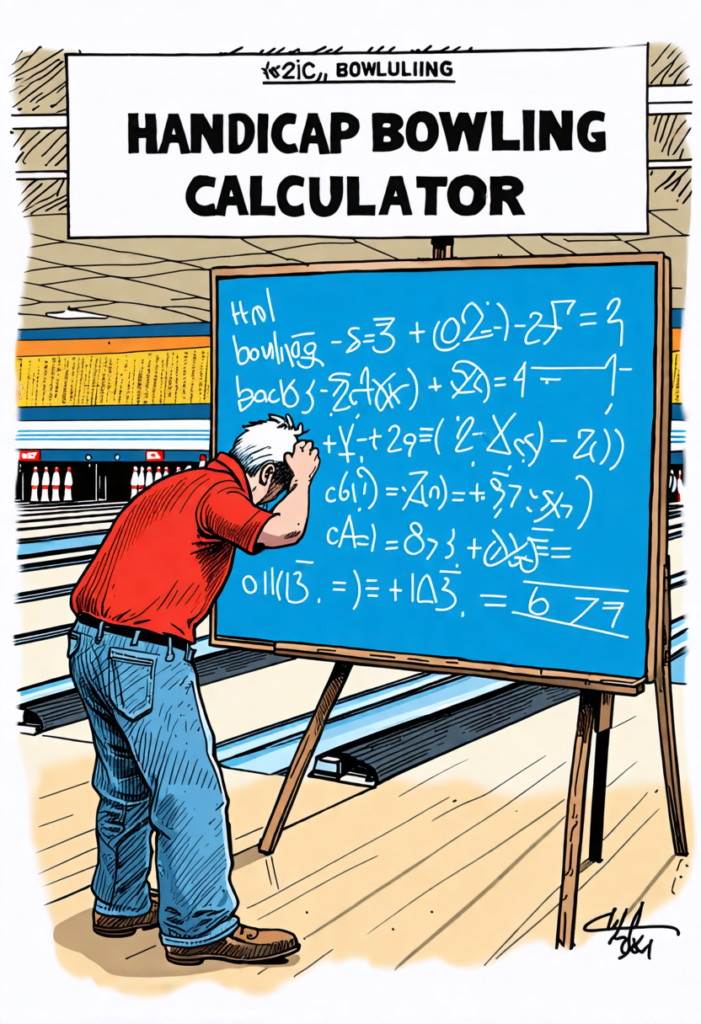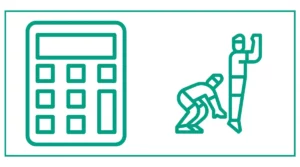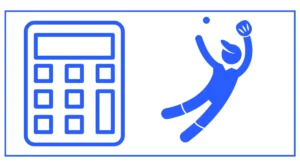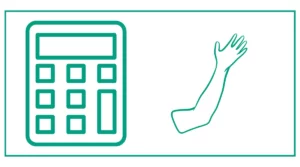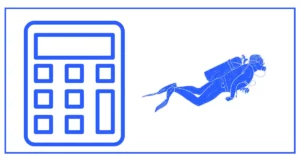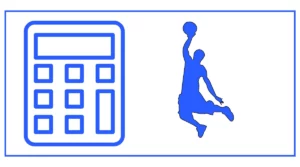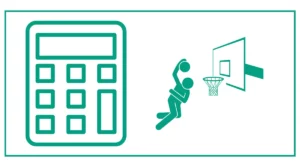Handicap Bowling Calculator
The handicap bowling calculator allows you to calculate your handicap bowling score. Enter your average, game score, basis score, and factor percentage.
You can get the basis score and factor percentage from the tournament officials.
The results show your handicap and adjust the result.
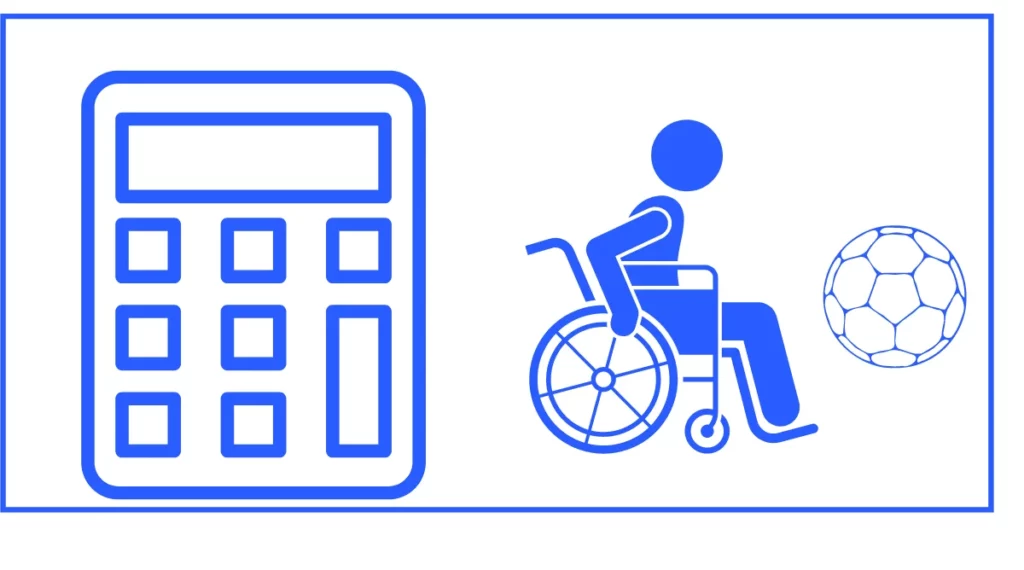
You might be interested in calculating the bowling average or fielding percentage.
Here’s a detailed description of the bowling handicap calculator tool, formatted with WordPress-compatible headings and adhering to the guidelines you’ve provided:
What is a bowling handicap?
A bowling handicap is a numerical value added to a bowler’s score to level the playing field between players of different skill levels. This system allows bowlers with varying abilities to compete against each other more fairly. The handicap is designed to give less experienced bowlers a fighting chance against more skilled opponents.
In bowling leagues and tournaments, handicaps are used to ensure that teams and individual bowlers can compete on a more equal basis. The handicap system encourages participation and makes the sport more inclusive, as it gives everyone a chance to win regardless of their skill level.
How is the bowling handicap calculated?
Calculating a bowling handicap involves several factors:
- The bowler’s average score
- A basis score
- A percentage factor
The general formula for calculating a bowling handicap is:
Handicap = (Basis Score – Bowler’s Average) x Percentage Factor
Let’s break down each component:
Bowler’s Average
The bowler’s average is typically calculated based on their performance in recent games. For new bowlers or those joining a league, an initial average may be established after bowling a certain number of games. As the league progresses, this average is updated to reflect the bowler’s current performance level.
Basis Score
The basis score is a predetermined value set by the league or tournament. It represents a target score that is higher than most bowlers’ averages. Common basis scores include 200, 210, or 220. The choice of basis score can vary depending on the skill level of the participants and the preferences of the league organizers.
Percentage Factor
The percentage factor is another predetermined value, usually set between 80% and 100%. The most common percentage factor is 90%, but this can vary based on league rules. The percentage factor helps to fine-tune the handicap system and prevent it from completely eliminating the advantage of highly skilled bowlers.
Using the Bowling Handicap Calculator
Our bowling handicap calculator is designed to help you determine your handicap quickly and easily. Here’s how to use it:
- Enter your average score in the “Your Average” field.
- Input your game score in the “Game Score” field.
- (Optional) Adjust the “Basis Score” if your league uses a different value.
- (Optional) Modify the “Factor %” if your league uses a different percentage factor.
- Click the “Calculate Handicap” button.
The calculator will then display your handicap and your adjusted result for the game.
Example Calculation
Let’s walk through an example to illustrate how the calculator works:
Suppose your average score is 147, and you’re playing in a league that uses a basis score of 200 with a 90% factor. Let’s say you bowled a game with a score of 160.
- Your average is 147
- Game Score: 160
- Basis Score: 200
- Factor %: 90
Using the formula:
Handicap = (200 – 147) x 90% = 53 x 0.9 = 47.7
The calculator would round this down to 47, as most leagues drop fractions of a pin.
Your adjusted score for this game would be:
160 (actual score) + 47 (handicap) = 207
This adjusted score of 207 is what would be used for competition purposes.
Benefits of Using a Bowling Handicap Calculator
- Accuracy: Manual calculations can be prone to errors, especially when dealing with multiple games or team scores. A calculator ensures consistent and accurate results.
- Time-saving: Quickly determine your handicap without the need for mental math or paper calculations.
- Fairness: By using a standardized calculation method, you can ensure that handicaps are applied consistently across all players in your league or tournament.
- Planning: Understanding your handicap can help you set realistic goals for improvement and track your progress over time.
- Competitive insight: Knowing how handicaps affect scores can give you a better understanding of your standing in league play and help you strategize for tournaments.
Handicap Bowling in Leagues and Tournaments
Bowling leagues and tournaments often use handicap systems to create a more balanced and enjoyable competition. Here’s how handicaps typically come into play:
League Play
In league play, teams often compete against each other based on their total pin count, including handicaps. For example, if Team A has a combined scratch (actual) score of 2000 and a team handicap of 200, their total score would be 2200. They would compete against Team B, who might have a scratch score of 2100 and a team handicap of 150, giving them a total of 2250.
Individual Tournaments
In individual handicap tournaments, each bowler’s handicap is added to their scratch score for each game. This allows bowlers of different skill levels to compete on a more level playing field. For instance, a bowler with an average of 160 might receive a higher handicap than a bowler with an average of 180, giving the less experienced bowler a chance to win based on their performance relative to their average.
Improving Your Game with Handicap Awareness
Understanding your bowling handicap can be a powerful tool for improving your game. Here are some ways to use this knowledge:
- Set realistic goals: Knowing your handicap helps you set achievable targets for improvement. Aim to gradually reduce your handicap over time by increasing your average score.
- Track progress: Regularly calculate your handicap to monitor how your skills are developing. A decreasing handicap is a clear sign of improvement.
- Identify weaknesses: If your handicap remains high, it may indicate areas of your game that need work, such as consistency or accuracy.
- Competitive strategy: In handicap-based competitions, understanding how the system works can help you develop strategies to maximize your chances of success.
- Mental game: Knowing that the handicap system levels the playing field can boost your confidence when competing against more experienced bowlers.
